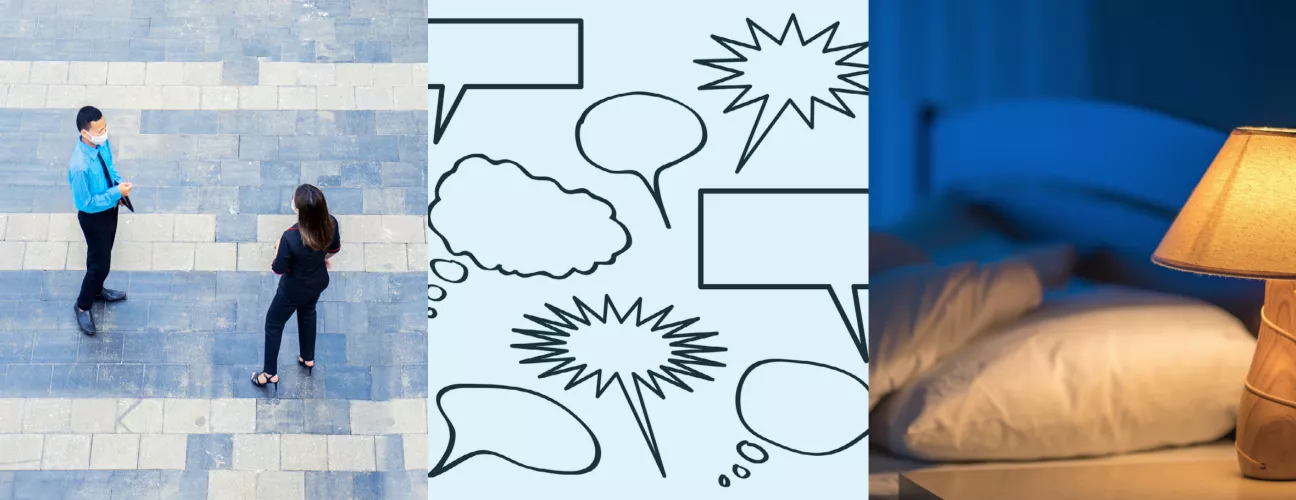
"Anthropology is a little bit of everything, and everything is a little bit of anthropology!" --Dr. Madeleine Mant, medical anthropologist
Everyday occurrences in day-to-day life can represent encounters with anthropology, as described below by anthropologists.
The distance between people when we hold a conversation
How does this relate to linguistic anthropology?
Even the simplest aspects of the way we talk are shaped by culture, are informed by our social environments. As an example, let’s take the distance between people when we hold a conversation. When you talk to someone, you usually keep a certain distance between you and the person you're speaking to. Of course, under the current pandemic circumstances you keep two meters, which precisely confronted us with how uncomfortable that can be – how strange and abnormal conversations can seem. And this is partially because we have a culturally informed notion of what a normal interaction looks like or, in this case, how close someone should stand for us to have a comfortable interaction.
Someone may stand just a tiny bit closer to you than what you are used to, and you might feel uncomfortable with that. You may feel like this person is invading your personal space. You think them pushy or annoying, not because of what they said, but because of how close they stood to you. Now, to this person, you may appear stand off-ish or cold, precisely because you prefer to move a bit farther away. And so our evaluations of people can be based on culturally shaped aspects of behaviour that we are not always fully conscious of. Rather than considering those minute, everyday aspects of interaction to be informed by culture, we may see them as personality traits or as confirming some stereotype we may hold of others.
-- Dr. Sarah Hillewaert, linguistic anthropologist (from Hot Topics in Anthropology lecture)
Having difficulty falling asleep at night
How might this relate to biological or evolutionary anthropology?
I approach this from the standpoint of an evolutionary biologist, so I think of this in terms of acute versus chronic stress. Acute stress is that freeze, fight, or flight response that is going to upregulate your neuroendocrine system, it's going to boost norepinephrine to activate your body, and it's going to pop cortisol so you have this stress response. It's a positive stress response that gets you out of tricky situations. But it's a problem in a modern context when it doesn't dissipate and we all are triggered by so many things in our environment that cause chronic stress, ergo a failure of fear extinction, which might be adding to the problems that we have falling asleep at night.
-- Dr. David Samson, evolutionary anthropologist (transcript from Dr. Samson's appearance on 3 Qs at the U).
Read Dr. Samson's tips on how to get a better sleep
Reading graphic novels and comics
How does this relate to sociocultural anthropology?
Sequential art like comics or graphic novels lends itself to teaching some of anthropology's basic humanistic lessons. These include thinking about and valuing different forms of thought and ways of living. We do this first by seeing the world through another's eyes from where they stand. Often, taking others’ views into account reveals our own standpoint as limited, and attending to what others attend can thus shift our vision from being one-dimensional to multi-dimensional. It can also encourage us to embrace another's viewpoint as essential to our own.
So if you've ever taken a cultural anthropology course hopefully that is part of the basic take-away: what we are doing in anthropology is learning about other ways of being human by approaching the world through a culturally relative perspective. Ideally that produces both a kind of appreciation for other ways of doing things as well as inspiration for fresh approaches and new possibilities regarding the challenges facing our world.
There is something unique about the visual medium of comic art that enhances these lessons. For example, emotion plays a big role in meaning-making: what an idea or experience means is profoundly intertwined with what we feel about it.
Since our own culture is very visual, graphic illustrations have a powerful way of communicating and evoking emotion and feeling. Moreover, our senses are deeply interconnected: sight is linked to sound and to smell and to taste and to touch; when we see something, those other sense are activated. Thus by approaching anthropology through comic illustrations, we can more fully and more powerfully experience the lives and views of others, especially in comparison to text-only forms like books and articles.
-- Dr. Andrew Gilbert, sociocultural anthropologist
